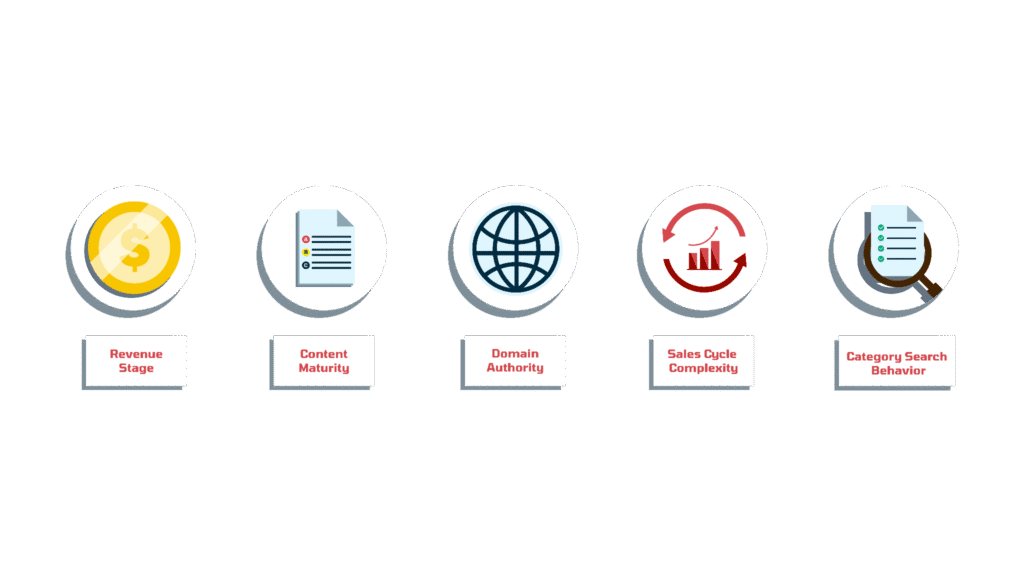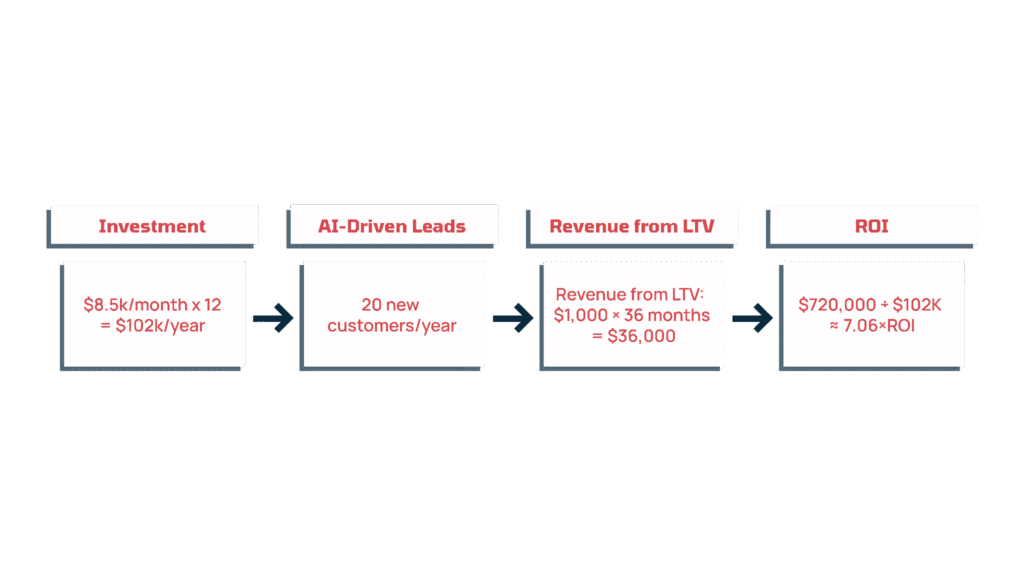Table of contents
Yes, Generative Engine Optimization can be worth it. Especially if you’ve already established strong acquisition channels like SEO. Generative Engine Optimization isn’t designed to replace your organic search strategy. Instead, it builds on it. If your content is already ranking and showing up in search, you’re in a strong position to extend that visibility into AI-driven answers.
TL;DR
- GEO builds on SEO, not replaces it: If your content is already ranking, GEO can extend your visibility into AI-driven answers.
- AI-driven search is growing fast: LLMs like ChatGPT and Perplexity are changing how users search, with early signals showing huge growth potential.
- Early adoption pays off: Brands that embrace new channels early: TikTok, Instagram, and now GEO, can capture attention, leads, and revenue before competitors.
Why think about GEO in the first place?
The fastest way to see why is to look at how quickly AI chatbots have gone mainstream. ChatGPT reached 100 million monthly active users within two months, making it the fastest-growing consumer app in history. By comparison, Instagram took about 2.5 years to reach 100 million users, and TikTok needed roughly nine months.
That acceleration matters for marketers: when adoption happens at this scale, platforms quickly become places where buyers ask questions, research vendors, and make decisions. Even today, AI systems already touch a large share of websites, Ahrefs reports that 63% of sites are visited by AI crawlers such as GPTBot, but they still drive less than 1% of referral traffic for most businesses. In other words: usage is exploding, traffic impact may still be small, but we’re standing at the very beginning of a major shift in online discovery.
History shows what happens next. New digital channels have consistently delivered outsized returns for brands that moved early:
- Gymshark’s rapid rise came from leaning into the creator culture on Instagram and TikTok, building growth through authentic influencer partnerships that matched each platform’s style.
- Brands like Glossier combined influencer marketing with Instagram ads in 2015, using the platform’s rise to build a passionate community that grew into a billion-dollar brand.
The implication is clear: New channels have created millions in revenue for those willing to take risks and be early adopters, and Generative Engine Optimization is showing signs of being the next channel with that same early-mover advantage.
Is GEO worth it for B2B SaaS?
AI-driven web traffic is still emerging, but the growth signals are hard to ignore. U.S. retail websites, for example, saw generative AI traffic surge by 4,700% year-over-year in July 2025, offering a preview of the dramatic transformation in consumer behavior that may soon spread to other industries. This growth in AI-driven traffic mirrors the broader expansion of the AI market itself, which globally is projected to exceed $2.5 trillion by 2032.
We believe AI traffic will grow even more over the next 2 years, and GEO has consistently delivered measurable returns for SaaS companies in competitive markets, especially where buyers conduct thorough vendor comparisons. For instance, MindfulHR, a B2B SaaS platform offering HR analytics and employee engagement tools, went from 0% to 72% AI visibility in just 45 days by implementing a structured GEO strategy.
But that doesn’t mean it’s working for everyone. Companies with sparse content libraries, weak rankings for key terms, or those primarily serving local markets with minimal research phases should focus elsewhere.
GEO works well when your company has already built a library of credible, high-E-E-A-T content.

As prospects research solutions with specific technical questions, your authoritative content appearing in AI responses creates a powerful competitive advantage during their evaluation process.
So, to evaluate if GEO is right for your SaaS company, compare your current position against these key indicators:

- Revenue stage: Your business is ready for GEO when it generates over $1M ARR and has clear product-market fit and defined growth objectives. At this stage, you have the budget flexibility and market traction needed for GEO to deliver meaningful returns, making it a worthwhile investment.
- Content maturity: If you have a strong content foundation, including comprehensive pillar pages, detailed technical documentation, case studies, and content authored by recognized experts, your GEO efforts are more likely to succeed, as this signals your brand has an authoritative content presence
- Domain authority and rankings: GEO works best for companies that already rank well in organic search for industry-relevant keywords. In other words, before AI can feature your content in responses, your website needs to be visible in traditional SEO. Strong performance in search results signals trust and authority, increasing the likelihood that AI models will reference your content.
- Sales cycle complexity: GEO works best for SaaS products with long, multi-stakeholder sales cycles. When purchases involve approvals, procurement reviews, and security checks, buyers do more research, giving your content multiple chances to influence their decisions.
- Category search behavior: GEO is more effective in markets where customers actively look for comparison content, alternatives, and “how to choose” topics. These searches often trigger AI-generated responses that can feature your content, increasing your SaaS company’s visibility during evaluation
The more criteria your company meets, the higher your potential ROI from GEO investments.
Pros and Cons of GEO
Adopting GEO comes with clear advantages, but it also carries considerations you need to weigh carefully.
Pros:
- Lead in Buyer Consideration: As more users turn to generative AI models for their queries, implementing GEO strategies positions businesses ahead of competitors who have not adopted these practices.
- High-Converting Traffic: To date, GEO drives exposure in AI-generated answers that reaches buyers actively researching solutions, generating traffic that converts at rates higher than almost any other channel.
- Enhanced Brand Authority: Being cited in AI-driven responses positions your company as a trusted and credible option, strengthening buyer confidence in your solutions.
- Early-Mover Advantage: With most competitors yet to adopt GEO, your brand can capture AI visibility now, establishing a dominant presence before the market catches up.
Cons:
- Model Volatility: As AI models update, the way they reference content can change, creating variability in GEO-driven visibility and making it a discipline that requires continuous monitoring and adaptation to maintain results.
- Early-Stage Playbooks: GEO doesn’t yet have decades of best practices, playbooks, or proven tools. Standards are still emerging, and a lot of tactics are experimental.
- Delayed results: Impact on pipeline and revenue takes time to materialize, often several months, so patience and consistent execution are required.
- Smaller Scale: Currently, GEO generates far less traffic than traditional search channels.
What GEO Will Cost You
After weighing the pros and cons and considering whether GEO is a fit for your business, it’s important to understand the different types of investment involved. Costs typically fall into three main categories: team and people, agency or tools, and process and operations.
Team and People Costs
Implementing GEO requires dedicated roles to ensure content is seen, cited, and trusted by AI models:
- SEO Specialist: Plans AI-focused content aligned with GEO strategy, identifies gaps, and ensures optimization for AI and search relevance.
- Average Salary: $66,214 per year
- Average Salary: $66,214 per year
- Content Writer: Produces new content or updates existing pages for AI visibility.
- Average Salary: $64,500 per year
- Average Salary: $64,500 per year
- Data Analyst / AI Analyst: Monitors which content is cited, tracks trends, and measures performance.
- Average Salary: $84,559 per year
- Average Salary: $84,559 per year
- Outreach / Authority Builder: Secures mentions, backlinks, and citations that boost credibility.
- Average Salary: $52,294 per year
- Average Salary: $52,294 per year
- Project Manager: Coordinates the team, timelines, and ensures GEO initiatives align with broader marketing goals.
- Average Salary: $94,507 per year
Many companies start by dedicating part-time hours from existing staff, often their content or SEO teams, since these roles are naturally aligned with GEO initiatives, and then scale to full-time roles as processes and ROI mature.
However, not all companies have these internal resources in place. If this is your case, you might turn to freelancers or agencies to get started quickly. Agencies, in particular, bring the specialized skills, experience, and bandwidth needed to execute consistently and maximize results, making them a practical option for businesses looking to accelerate GEO implementation.
For those looking for guidance, we’ve compiled a list of the best GEO agencies, highlighting their specialties and how they can support your growth. Once you know whether an agency is the right fit, it is important to understand what implementation will cost.
Pricing for GEO isn’t one-size-fits-all. It involves multiple workstreams, and the effort required depends on your site’s size, content maturity, and the competitiveness of your market. If you want a detailed breakdown, we’ve covered it in our article How Much Does GEO Cost? Here, we’ll stick to giving you a clear snapshot of what agencies are currently charging.
Because GEO is continuously evolving, it’s rarely sold as a one-off project, so market standard is monthly retainers, and two common pricing models dominate:
- GEO-only retainers. Ideal for companies with a solid SEO foundation that just need GEO layered in. These typically start around $2K–$2.5K/month and scale depending on deliverables (content volume, PR reach, reporting depth).
- SEO + GEO retainers. For companies that need both SEO fundamentals and GEO execution, pricing usually starts around $5K/month and goes up with scope.
At Singularity, our current discounted GEO + SEO bundles are:
- Starter: $4.1K/month
- Medium: $8.5K/month
- Fast: $13K/month
And our GEO-only option is priced at $2K/month.
Calculating the Potential ROI
Let’s break down a realistic scenario using the Medium Singularity bundle ($8.5K/month) with mid-market B2B SaaS customers typically spending $1,000 per month. This figure comes from HubSpot’s Marketing Hub Professional used as an example (which starts at about $890/month for 3 seats. Additional seats and contacts can add anywhere from $50–$250 each, depending on team size and contact volume, bringing the total monthly spend for a mid-market customer close to $1,000).
Step 1: Annual Investment
- $8.5K/month × 12 months = $102K/year
Step 2: Estimate Customer Value
- Average Monthly Spend: $1K
- Customer Lifetime Value (LTV): $1,000 × 36 months = $36,000 per customer
Step 3: Estimate Customer Gains from GEO
- Assume AI-driven visibility brings in 20 new customers annually.
Step 4: Calculate Potential Revenue
- 20 customers × $36,000 LTV = $720,000 revenue
Step 5: Calculate ROI
- ROI = Revenue ÷ Cost = $720,000 ÷ $102,000 ≈ 7.06× ROI

Bonus “2-for-1” Value:
- As SEO + GEO overlap, content optimized for GEO also improves traditional search rankings, effectively giving you two channels for the price of one, increasing total value beyond this calculation.
Bottom Line
GEO is an emerging channel with the potential to deliver substantial ROI for SaaS companies already equipped with strong SEO and content foundations. And early adoption can position your brand in AI-driven search results before the market matures, giving a competitive edge during buyers’ evaluation process.
Start by assessing your readiness: look at your ARR, content maturity, domain authority, sales cycle complexity, and how your customers search for solutions.
Implementing GEO successfully will take dedicated effort (either through your internal team or with an agency) and a long-term perspective, because results don’t happen overnight.
Next Steps
- Decide if GEO is worth pursuing: Weigh the potential ROI against the investment.
- Choose your execution path: Determine whether to leverage your internal team or partner with an agency.
- Access supporting resources:
- If considering an agency, review our curated list of best GEO agencies.
- If considering an agency, review our curated list of best GEO agencies.
To accelerate your success, consider partnering with Singularity Digital for GEO services. Our team can help you strategize, implement, and optimize your AI-driven content to maximize visibility, citations, and ROI.



